We’ve all had it drilled into us to “plant the right plant in the right place.” But what used to be the right plant 20 years ago is starting to look a bit lame compared to the plants that breeders have been releasing over recent years. These plants have enhanced pest resistance, drought tolerance and are more beautiful, among other improvements.
The Science Behind Plant Breeding for Functionality
Plant breeding for the amenity landscape is a scientific process that usually involves selective breeding and tissue culture, which is simply cloning propagation with a scalpel. Through these methods, plant breeders can enhance the characteristics of plants, making them more suitable for specific functions or environments. This process is governed by Plant Breeders’ Rights (PBR), which protect the intellectual property of plant breeders.
Cultivars for Narrow Spaces
Let’s go over some of the plants we’ve bred and tested rigorously for gardens with small spaces at Ozbreed.
Straight & Narrow Syzygium australe ‘SAN01’ PBR
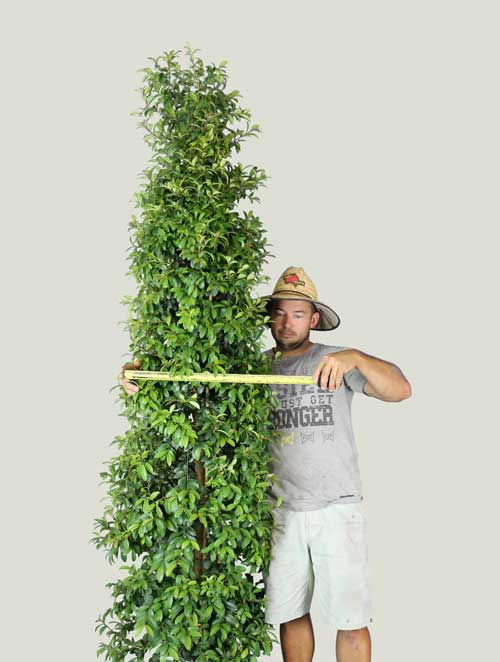
Straight & Narrow Syzygium is an excellent example of a plant bred for functionality. This cultivar of the lilly pilly species has been specifically bred to exhibit a narrow growth habit, making it perfect for tight, narrow spaces where other lilly pillies may not fit. Its dense, glossy foliage looks great and provides an excellent screen or hedge. On top of that, this cultivar has superior resistance to psyllids, making it a more robust option compared to other varieties.
Slim Callistemon viminalis ‘CV01’ PBR
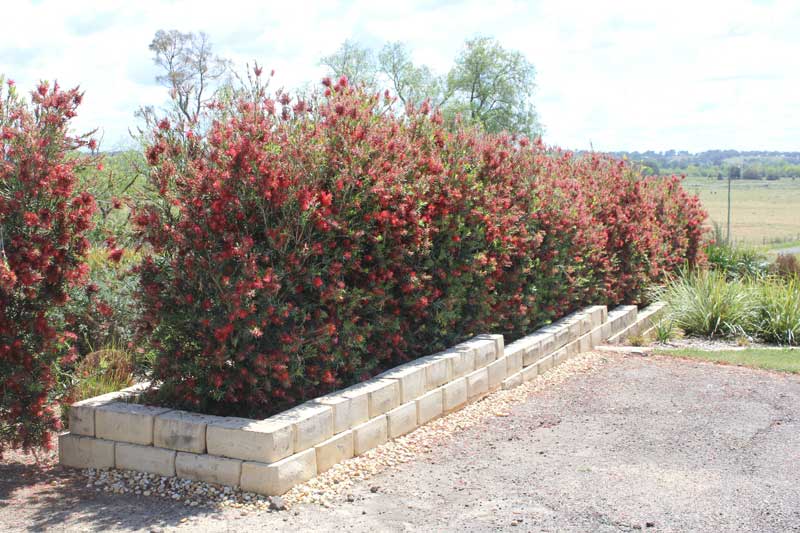
This bottlebrush cultivar has also been bred to have a slim growth habit, making it ideal for narrow or tight spaces. Despite its slender form, it still produces an abundance of vibrant red bottlebrush flowers, typical of the Callistemon genus. This cultivar is also flood and drought-tolerant and requires minimal maintenance, making it an excellent option for landscapes where water efficiency is a priority. The breeding efforts have resulted in a plant that retains the aesthetic appeal of the bottlebrush while being more adapted to landscape requirements.
Thin Red™ Photinia x fraseri ‘NP01’ PBR
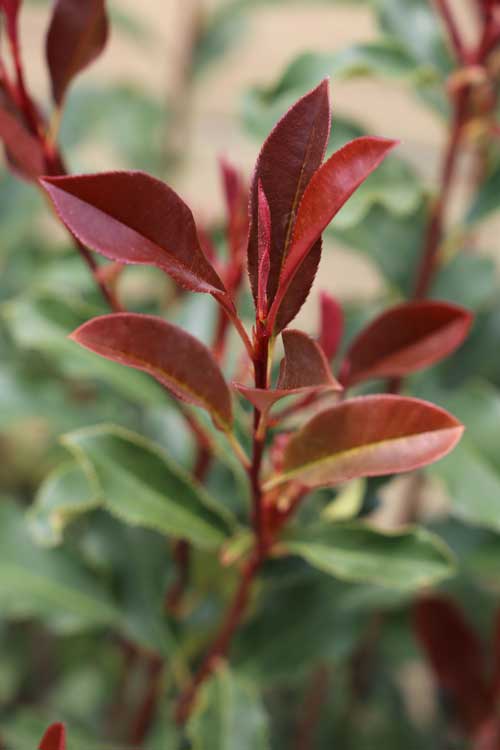
Thin Red™ Photinia is a cultivar that stands out for its bright red new growth, which provides a striking contrast against the mature green foliage. This plant has been bred to have a thin, upright growth habit, making it another option for narrow spaces or as a screening plant. The plant’s breeding has focused on developing a plant with vibrant colour, a narrow form, and better performance in the Australian landscape, making it superior to other varieties.
Exploring Other Functional Plant Breeds: Beyond Size and Shape
Quick Fence™ Viburnum odoratissimum ‘VOQ1’ PBR
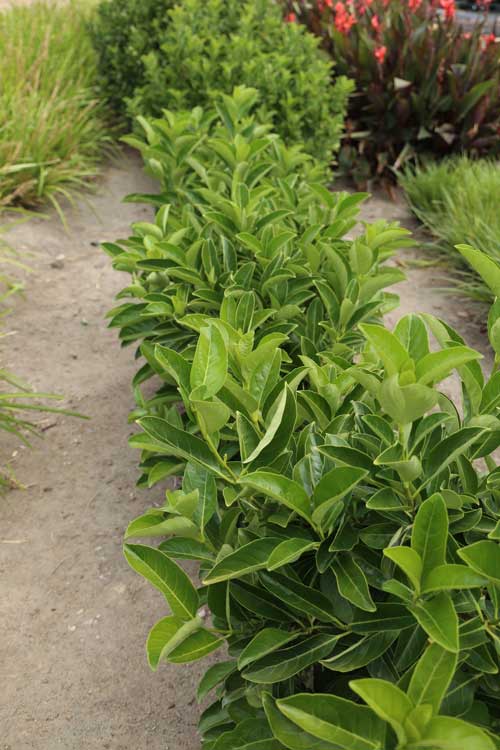
Quick Fence™ Viburnum is a fast-growing plant bred for creating quick screens or hedges. This plant has been selectively bred to have a fast growth rate, providing an excellent screen in a short time. It is also low-maintenance and drought-tolerant, making it superior to other viburnum varieties in terms of functionality and adaptability.
Flat White™ Pandorea jasminoides ‘PJ01’ PBR
Flat White™ Pandorea is a unique cultivar of the bower vine. This plant has also been bred to have a flat growth habit, making it ideal for use as a ground cover or in hanging baskets. It still produces typically beautiful Pandorea white flowers that add an aesthetic appeal to any landscape. But this cultivar’s breeding process has focused on developing a plant with more controlled growth and improved flowering abundance compared to other bower vine varieties.
Variegated Tanika™ Lomandra longifolia ‘NPW3’

Variegated Tanika™ Lomandra is an improvement on the already popular Tanika® Lomandra longifolia ‘LM300’ PBR, one of the toughest, most resilient landscape plants that have ever been bred. The variegated version has been bred to include white and green stripes in the leaves, adding a new aesthetic flair. This variegation doesn’t compromise the plant’s hardiness, making it a superior option for landscapes requiring low-maintenance plants with a pop of colour.
Everlasting Mega Gold™ Anigozanthos hybrid ‘KP03’
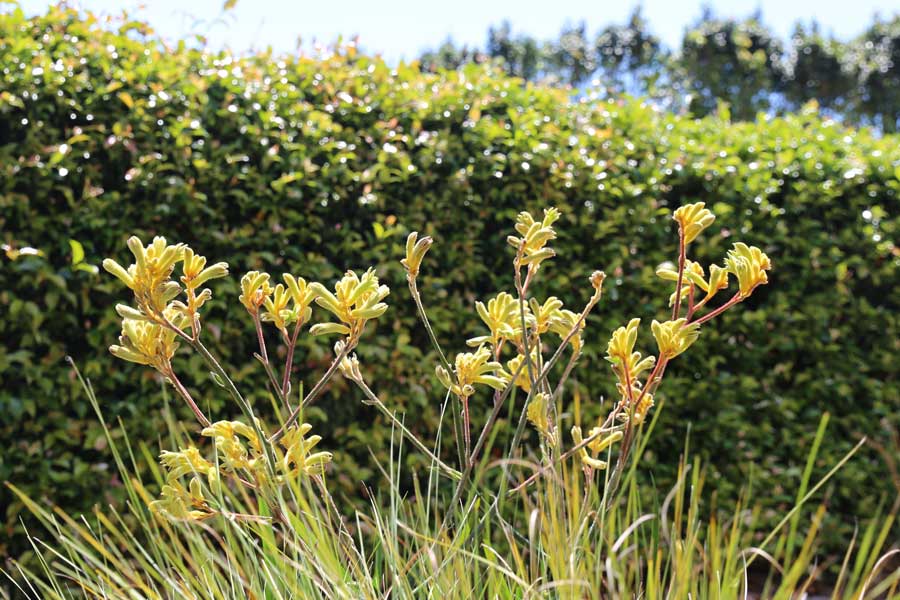
This is a kangaroo paw cultivar that stands out for its ability to flower all year round. Unlike other kangaroo paws, which typically only bloom through the warmer months, Everlasting Mega Gold™ kangaroo paws provide vibrant yellow flowers throughout the year, adding a constant splash of colour to any landscape. This year-round flowering trait makes it superior to other kangaroo paw varieties.
The Future of Plant Breeding for Functionality
As we look towards the future, we can expect to see more exciting developments in plant breeding for functionality. These advancements will undoubtedly have significant implications for us as landscape architects, allowing us to create more adaptable, aesthetically pleasing, and functional landscapes.
One trend we’re likely to see is an increased focus on breeding plants for climate resilience. With changing weather patterns and rising global temperatures, there’s a growing need for plants that can withstand extreme conditions while still maintaining their aesthetic appeal. This could mean breeding plants that can tolerate higher temperatures, require less water, or are more resistant to pests and diseases. This will allow us to continue to plant the same species that have traditionally existed in the environment but will be unable to keep up with the changes to climate.
New diseases and pests are continually emerging and evolving, and urbanisation exacerbates this issue by creating more favourable conditions for certain pests and diseases. Breeding plants that have increased resistance to these threats will be crucial for maintaining healthy landscapes.
If you browse our catalogue of plants at Ozbreed, you’ll notice that we focus on more than just aesthetics. Our motto “no fuss, functional and reliable” is an ethos that we truly abide by.
Conclusion
The plants you choose for your designs need to be functional and adaptable. They must be able to thrive in the landscapes we create, all while serving the specific purposes we have planned for them. And they have to spark joy in the people who visit, live, and work in the spaces you design.
The work done by plant breeders in enhancing these plants is invaluable. They provide us with the tools we need to create landscapes that are not only beautiful but also sustainable and resilient. By allowing 5% of your specified plants to be plants that you haven’t used before, you open up the opportunity for discovery and innovation.
After all, our landscapes are more than just spaces; they are living, breathing entities that reflect the harmony between nature and human
